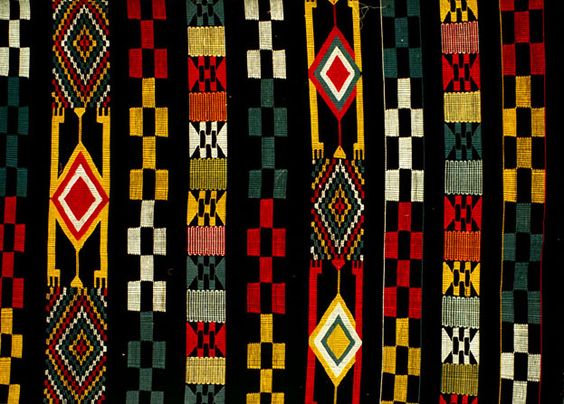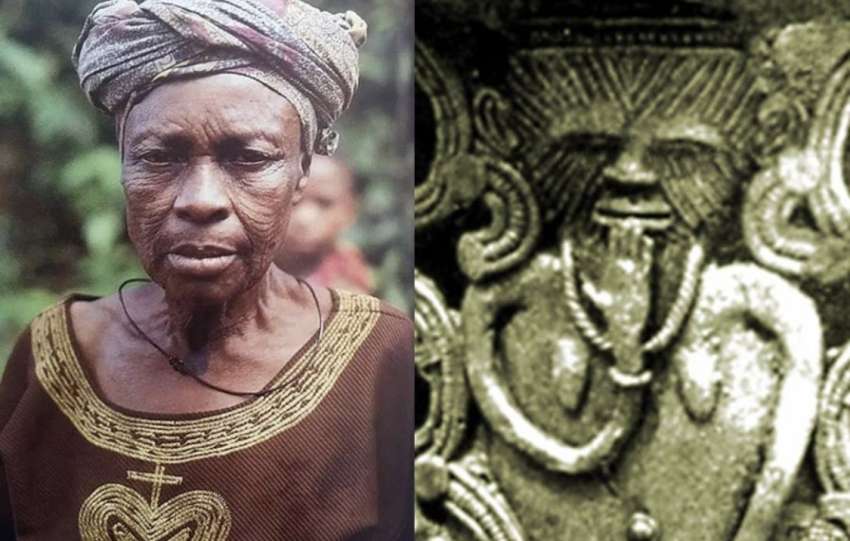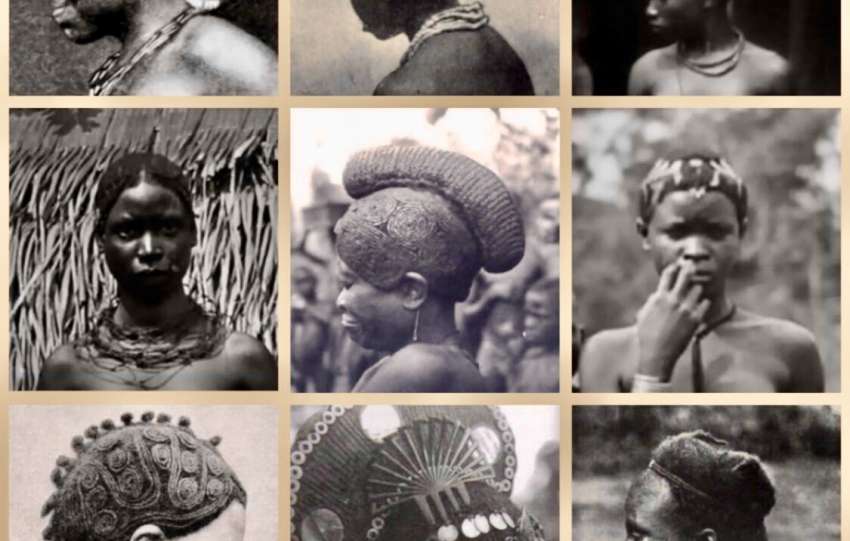The Igbos are one of the largest ethnic groups in Nigeria, tracing a rich cultural heritage several centuries back. Textile Art is an essential part of Igbo tradition and is woven into the fabric of social, religious, and economic life. Through its intriguing patterns, colors, and designs, Igbo textile art is a visual representation of cultural values, spiritual beliefs, and historical narratives. Since it is in a world where modernization moves at a fast speed, this traditional textile art should be preserved to maintain the unique identity and cultural continuity of the Igbo people.
Akwete Cloth: A Tradition of Weaving in Abia State
Akwete cloth is perhaps the most famous Igbo textile, noted for its complicated weavings and colorful patterns. It comes from the Abia State town of Akwete, normally performed by women on horizontal looms. Akwete cloth production is an extremely labor-intensive process whereby the weaver creates elaborate patterns totally from her memory without using any sketches. It thus requires much expertise but also a deep knowledge of motifs and meanings.

Traditionally, Akwete cloth played many roles including everyday wear, ceremonial dress, and even currency or trade goods. Colors and motifs are consciously chosen to communicate some particular message or to symbolize certain things about Igbo cosmology. A red color is symbolic of strength or war, while blue is often associated with spirituality and calmness.
Indigo Dyeing
Indigo dyeing is another important Igbo aspect of textile art; it symbolizes both economic and cultural wealth. In order to achieve its richly deep blue shades, the process of extracting dyes from local plants, which must be fermented and used in coloring fabrics, is involved. The indigo cloths that are produced from this are usually worn by people of high status or used in ritual contexts, reflecting both spiritual and cultural importance.

Indigo holds a sacred place in Igbo culture. Its color Symbolizes purity and mystery with connections to the ancestral world. Most textiles dyed in indigo have patterns associated with protection, wisdom, and continuity; such designs serve to emphasize the ways in which color and design in Igbo textiles carry meanings that are more than just aesthetics.
Uli Art
However, Uli art belongs to both body and wall painting; it has very strongly influenced Igbo textile designs. The Uli design is based on freehand organic shapes in spirals, lines, and animal motifs, derived from nature.

In Uli art, the designs have special meanings and are created freely, reflecting Igbo values of flexibility and a close connection with nature.

The beauties, fertility, and other cycles of life make Uli patterns reproduced in textiles repeatedly. The incorporation of Uli into fabric provides the textile with an ability to be both a medium for storytelling and a means through which elements of Igbo cosmology and the intimate interrelationship between man and nature in their relation to the spiritual world are expressed.

Igbo Designs: Symbols and Cultural Identities
Igbo textile patterns are anything but random decorative elements; they are symbolic representatives of some sort of complex idea. For every pattern or motif, there is an underlying meaning representative of either animals, spiritual concepts, or any form of historical event. This forms a visual dialect that could be “read” by those familiar with that culture. It is this symbolic layering that allows Igbo textiles to carry cultural knowledge and, in turn, reinforce social identity within an Igbo community.
For instance, fertility, protection, or strength motifs may be integrated into textiles intended to be worn by pregnant women, warriors, or community leaders. These kinds of signs form part of the social fabric of Igbo; therefore, the role of a person, their identity, and their descent are further highlighted.
Preservation Challenges
This could be quite harmful to Igbo textile traditions within the modern world. With globalization and mass-produced cloth, traditional weaving and dyeing are highly unprofitable. The younger generation might not see economic viability within traditional textile production, which requires great time, skill, and resources.
Nonetheless, the revival and sustenance of Igbo textile arts have been sought within and outside Nigeria. These traditional skills of making textiles are being taught through cultural organizations and educational programs to the younger generations. Some modern designers incorporate traditional patterns into contemporary fashion to make Igbo textile art more appealing and relevant to the world.
Cultural Institutions and Preservation
This makes museums, cultural centers, and universities some of the most important institutions in the preservation and promotion of Igbo textile art. Such platforms provide Igbo textiles for appreciation through exhibitions, workshops, and documentation. The University of Nigeria at Nsukka has led the documentation and preservation of Uli and Akwete techniques as part of a research program aimed at closing the gap that has largely existed between traditional art forms and their appreciation in these modern times.
The Future of Igbo Textile Art
The continuation and survival of Igbo textile art depend both on innovation and tradition. Igbo textile artists can reach out to a new audience by blending traditional techniques with modern designs and continue to keep their art alive. Designers have integrated Igbo patterns into modern high-fashion collections, while some make pieces celebrating Igbo heritage but in fine ways that balance old and new aesthetics.
These adaptive approaches mean that Igbo textiles continue to act as a bridge back in time as new generations reach back into their cultural roots. And so long as the meanings embedded in these patterns are kept intact, Igbo textile art will remain a strong symbol of strength, identity, and cultural pride.
Igbo textile art remains one of the proofs of creativity and resilience among the Igbo people, serving almost as a visual language that preserves their heritage and history. In so doing, and by sticking with these traditional patterns and techniques, the Igbo community not only preserves its culture but also secures it for future generations so they will not lack any significant connection with their ancestral roots.
References
- Achebe, C. (1958). Things fall apart. Heinemann.
- Eze-Uzomaka, P. (2013). Textile traditions of the Igbo of southeastern Nigeria: The Akwete weaving industry. Journal of African Cultural Studies, 26(2), 180-195.
- Obi, M. N. (2021, March 15). The evolution of Akwete cloth and Igbo textile art. African Art Now on African Art Now’s official website.
- Nigerian Textiles Heritage. (2023). Igbo patterns and the significance of Akwete cloth. Nigerian Textile Museum. Retrieved November 11, 2024, from Nigerian Textile Museum’s online resources.



